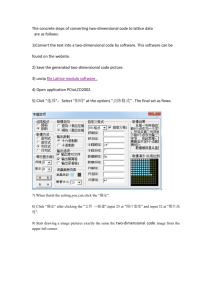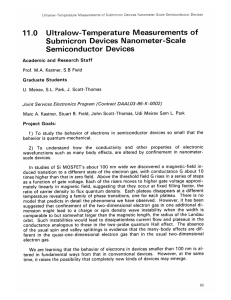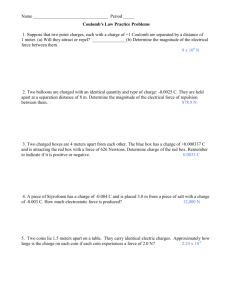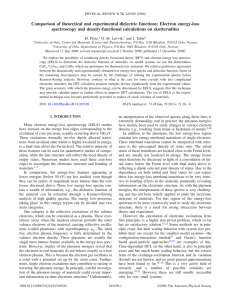PHZ 7427 Spring 2009 – Homework 2
advertisement
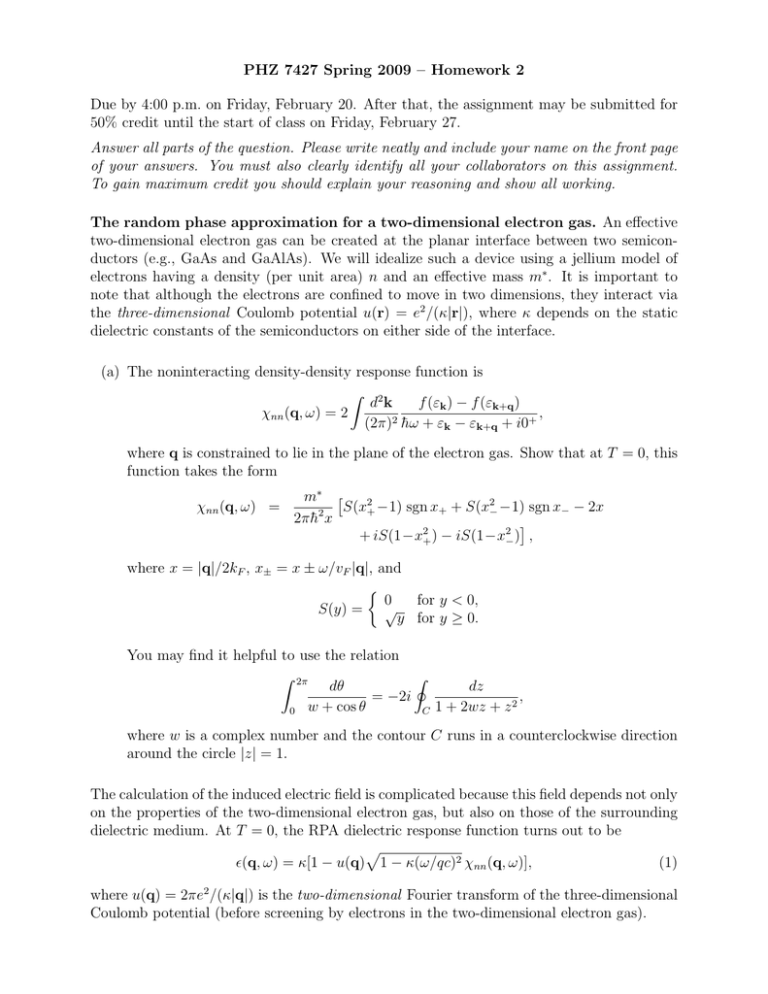
PHZ 7427 Spring 2009 – Homework 2 Due by 4:00 p.m. on Friday, February 20. After that, the assignment may be submitted for 50% credit until the start of class on Friday, February 27. Answer all parts of the question. Please write neatly and include your name on the front page of your answers. You must also clearly identify all your collaborators on this assignment. To gain maximum credit you should explain your reasoning and show all working. The random phase approximation for a two-dimensional electron gas. An effective two-dimensional electron gas can be created at the planar interface between two semiconductors (e.g., GaAs and GaAlAs). We will idealize such a device using a jellium model of electrons having a density (per unit area) n and an effective mass m∗ . It is important to note that although the electrons are confined to move in two dimensions, they interact via the three-dimensional Coulomb potential u(r) = e2 /(κ|r|), where κ depends on the static dielectric constants of the semiconductors on either side of the interface. (a) The noninteracting density-density response function is Z 2 dk f (εk ) − f (εk+q ) χnn (q, ω) = 2 , 2 (2π) h̄ω + εk − εk+q + i0+ where q is constrained to lie in the plane of the electron gas. Show that at T = 0, this function takes the form χnn (q, ω) = m∗ S(x2+ −1) sgn x+ + S(x2− −1) sgn x− − 2x 2 2πh̄ x + iS(1−x2+ ) − iS(1−x2− ) , where x = |q|/2kF , x± = x ± ω/vF |q|, and 0 for y < 0, S(y) = √ y for y ≥ 0. You may find it helpful to use the relation Z 2π I dθ dz , = −2i 2 0 w + cos θ C 1 + 2wz + z where w is a complex number and the contour C runs in a counterclockwise direction around the circle |z| = 1. The calculation of the induced electric field is complicated because this field depends not only on the properties of the two-dimensional electron gas, but also on those of the surrounding dielectric medium. At T = 0, the RPA dielectric response function turns out to be p (1) (q, ω) = κ[1 − u(q) 1 − κ(ω/qc)2 χnn (q, ω)], where u(q) = 2πe2 /(κ|q|) is the two-dimensional Fourier transform of the three-dimensional Coulomb potential (before screening by electrons in the two-dimensional electron gas). (b) Calculate the plasmon dispersion relation ω(q) using the simplified expression (q, ω) = κ[1 − u(q)χnn (q, ω)]. You should find that ω ∝ √ (2) q for small q. (c) Over what range of wave vectors q does using Eq. (1) instead of Eq. (2) produce significant corrections to the plasmon dispersion relation? (d) Over what range of wave vectors q are the plasmons strongly damped? (e) Working within the RPA approximation, calculate the screened Coulomb interaction uRPA (q, ω) = 2πe2 . (q, ω)|q| (f) Show that in the zero-frequency, long-wavelength limit, the screened Coulomb interaction reduces to the form 2πe2 uRPA (q) = . κ(Q + |q|) Show that the screening wave vector Q is independent of the electron density. (g) Calculate Q/kF for a two-dimensional electron gas in which m∗ = 0.1m, κ = 10, and n = 1015 m−2 (all fairly realistic values for a semiconductor heterostructure).
